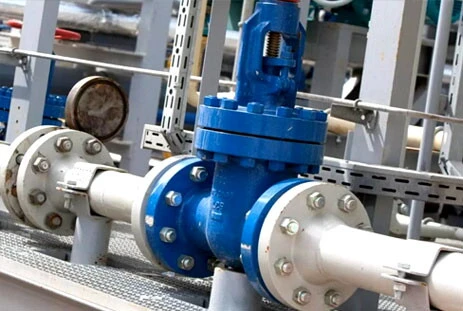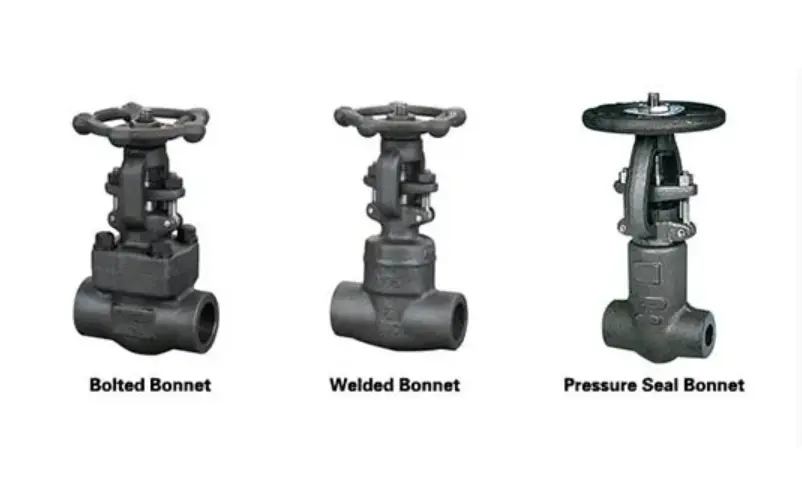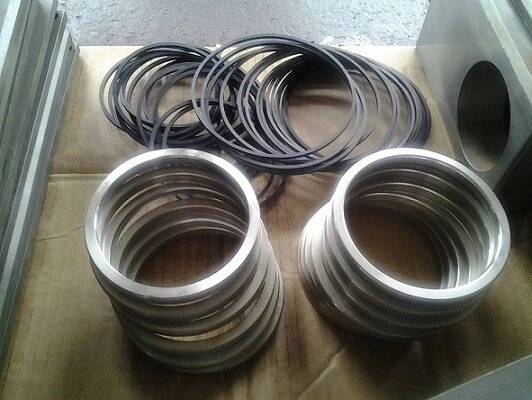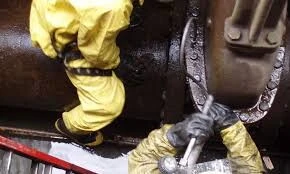
What exactly is a valve bonnet, then? In its simplest configuration, it covers or cascades the valve body, creating a tight seal that stops leakage. In actuality, the valve bonnet serves as a pressure barrier to protect the valve's internal parts. Its function changes based on the kind of valve it is integrated into, which affects how the valve operates. In a globe valve, for example, the stem is housed in the valve bonnet and helps control the fluid flow when the valve is opened.
For a bonnet to form a tight seal is one of its primary functions. Their responsibility is to stop any leaks from the valve. Valves act in concert with other components like the packing and gasket to accomplish this. In particular, the valve bonnet gasket is crucial to creating this tight seal. Smooth and safe valve operations depend on this effective sealing mechanism. However, how can we assess this seal's efficacy? Bonnet tests are useful in this situation as they assist confirm the seal's integrity and identify any possible valve leaks that may require maintenance.
There are many varieties of valve bonnets to suit the distinct needs of different applications, thus they are not one-size-fits-all. Standard, extended (sometimes called long bonnet ball valve), cryogenic, and bellows seal bonnets are the four most popular varieties. Numerous variables, like the working environment, temperature, pressure, and kind of fluid being regulated, influence the decision between these bonnets. Every kind of bonnet has certain qualities and benefits of its own.
For example, standard bonnets are most frequently used in daily applications. On the other hand, the long bonnet ball valve is designed for high-temperature and high-pressure situations where a conventional bonnet might not be adequate. Bellows seal bonnets provide excellent sealing and are frequently used in situations where leakage must be reduced, whereas cryogenic bonnets are made for activities at extremely low temperatures.
Now, let’s look more specifically at these types:
- Standard Bonnet: The most popular form of valve bonnet, ideal for daily use
- Extended Bonnet: Designed to withstand high temperatures and high pressure, this product has a longer length to meet insulation and thermal expansion requirements.
- Extended Bonnet: Designed to withstand high temperatures and high pressure, this product has a longer length to meet insulation and thermal expansion requirements.
- Cryogenic Bonnet: Especially created for applications requiring extremely low temperatures, it keeps valve integrity intact in ice settings.
- Bellows Seal Bonnet: Excellent sealing that reduces the possibility of leaks; frequently utilized in situations where tight seal requirements are crucialProvides exceptional sealing and minimizes potential leakage, often used in applications where tight seal requirements are of utmost importance

The term "valve design" refers to the combination of the valve body and the bonnet. These parts are available in several designs, each of which corresponds to a particular kind of valve. A valve's use, performance, and function are significantly influenced by its design. The main fluid container is the valve body, which is sealed off by the bonnet, which also houses the actuator, stem, and disc. The kind of fluid, pressure classes, operating requirements, and environmental factors frequently determine how these components are designed. This results in a large range of valve bodies and bonnets, each with specific characteristics and functions.
One of the most popular kinds of industrial valves are gate valves, which mostly depend on their bonnets to function properly. A gate valve's bonnet is essential for both sealing the valve and keeping its important working elements contained. Bolted and welded bonnet gate valves are the two most common varieties of gate valve bonnets.
Many materials are used in the production of valve bonnets; the selection of a material is mostly based on the intended use and the surrounding environment. Stainless steel, cast iron, and alloys like nickel or titanium are examples of common materials. The choice depends on elements such as resistance to corrosion, durability, bearing capacity, and the fluid under control.
Gaskets seal the joint surface between the bonnet and the valve body, which is essential for bolted bonnet gate valves. By forming a tight seal that is essential for smooth valve operation, these gaskets—which are frequently composed of materials like graphite—ensure that there are no leaks. The kind of fluid, application-specific pressure, and temperature all influence the gasket selection for gate valves.

Although they have identical purposes, bolted and welded bonnet gate valves are very different in design. Bolted bonnet gate valves are commonly used in the industry and have a straightforward design with mechanical components like handwheels, levers, or yokes for ease of maintenance. However, welded bonnet gate valves—which are made utilizing resilient welding techniques—are frequently chosen in high-pressure applications where longevity and leak resistance are crucial.
A vital component used in many industries, including natural gas, petroleum, water treatment, and power generation, are valve bonnets. The kind of bonnet required varies depending on the specific requirements of each sector. Cryogenic bonnets, for example, are the preferred option in the LNG sectors where low-temperature applications are common. In the meantime, high-temperature applications such as steam lines frequently utilize extended bonnet ball valves and bonnet globe valves.
The performance and longevity of valve bonnets are significantly impacted by operating pressure. Bonnets must endure significant stresses when exposed to high pressures, which calls for tougher materials and design elements. A design that is specifically adapted for high-pressure applications, pressure seal bonnets guarantee optimal performance by reinforcing the seal with internal pressure.
Torque and linear motion are essential for integrating valve bonnets with other valve components during valve operation. For example, accurate calibration is necessary for valve stems, valve discs, and stem threads in order to guarantee smooth operation of quarter-turn, swing-check, and butterfly valves. It is essential to give careful thought to valve size, wafer designs and flanges, engineering standards like ASME and API, and other factors that affect how well control valves and pipe systems work together. The evolving trends and technological advancements, such as the growing prevalence of disposable valves and the expanding influence of the internet, necessitate the development of novel solutions such as red point valve indicators or needle valves with superior bushings and glands to keep up with the constantly shifting demands of the industry.Advice on Upkeep and Care to Extend the Life of Valve Bonnets.
Maintaining valve bonnets on a regular basis is essential to maximizing their longevity. This entails regular inspections to spot any wear and tear indicators or possible valve leak problems that need to be fixed right away. Longevity of the valve bonnet can also be increased by routinely lubricating and cleaning it. Because they are essential to valve function, bonnets and stems need special care when undergoing maintenance.
For example, in order to avoid operational failure or even safety issues, any indication of a broken gate valve would require prompt repair or replacement. To stop additional harm or system disruption in cases where disassembly may be challenging or impossible, it's critical to understand how to fix a leaky threaded joint without disassembling the system.
For operations to remain effective and secure, it is essential to recognize the symptoms of a malfunctioning valve bonnet. A leak is among the most typical indicators. A leaking valve may be the result of several problems, such as a decaying packing or a worn-out bonnet gasket. Typically, routine inspections or bonnet tests can identify them.
When a gate valve isn't closing, it could be a sign that something is wrong with the bonnet or other internal parts. Moreover, keep an eye out for difficult-to-open or blocked valves. If a leak is present, it can indicate a problem with the bonnet. In these situations, being able to rebuild or repair a gate valve can be quite helpful in keeping things running smoothly.
Many considerations must be made while choosing the appropriate valve bonnet for your application. Determine the operational parameters first, including the kind of fluid being used, the operating pressure and temperature, and the type of valve. Every kind of bonnet has a particular function. A long bonnet ball valve, for example, can be the best option for high-temperature applications.
Don't forget about maintenance ease. When it comes to maintenance and repairs, bolted bonnets require less effort than welded bonnets. Selecting the bonnet's material is another important consideration. Selecting a material that is capable of withstanding the operational circumstances is crucial for guaranteeing longevity and effectiveness.
Recall that creating a tight, secure seal to stop leaks is the ultimate objective, and the bonnet is essential to achieving this. For this reason, a well-chosen bonnet may provide safe and effective valve functioning.
Industrial valve operation relies heavily on valve bonnets, which come in a wide range of types and uses. Their value cannot be emphasized, as they house essential components and provide a tight seal. Valve bonnets have the potential to greatly enhance safe and effective valve operations, which in turn can guarantee the seamless functioning of numerous industries, provided they are properly understood, chosen, and maintained.


